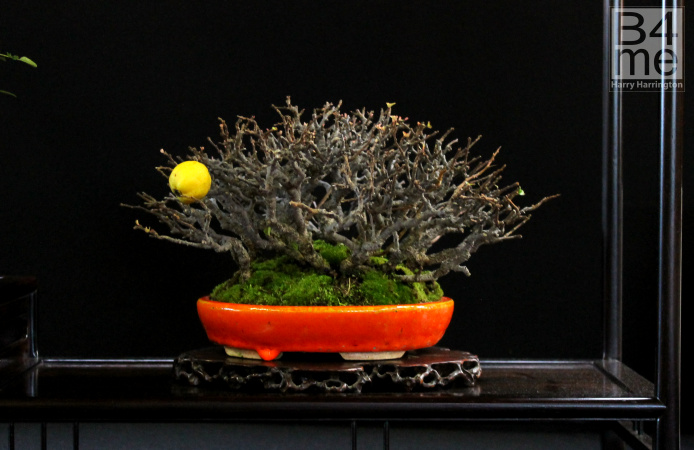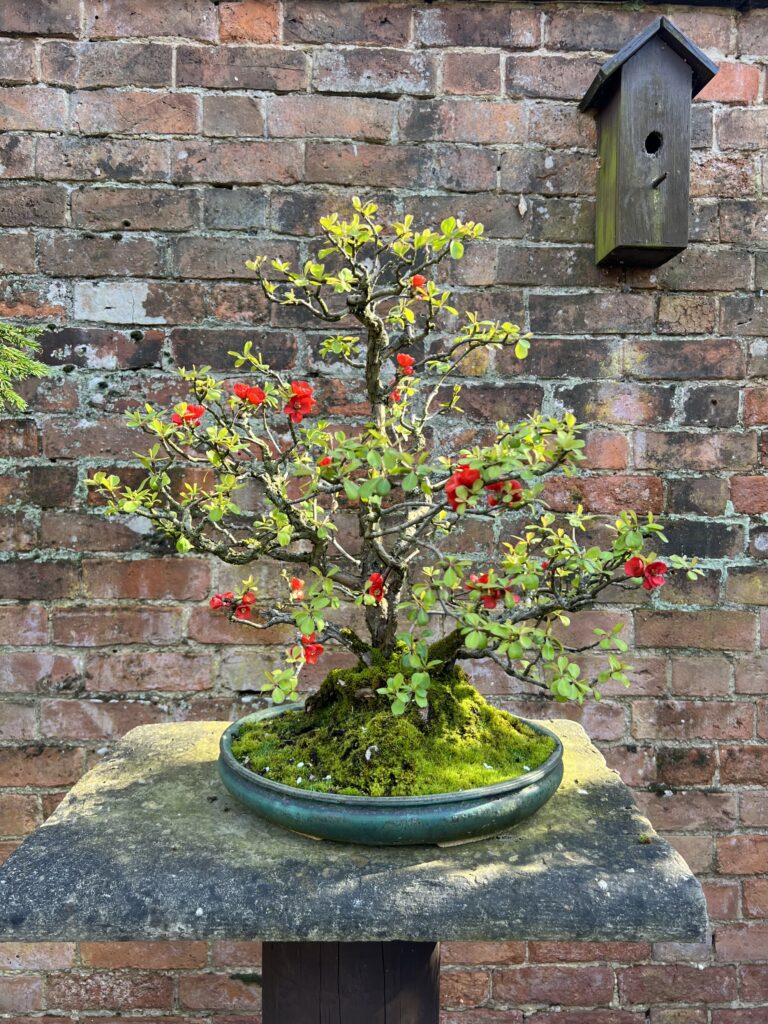
Chaenomeles is a genus of 3 species of deciduous, spiny shrubs from mountain woodland in Japan and China. They are favoured for their early flowers which appear from early January onwards on bare branches and can continue after the appearance of leaves. Apple-like edible fruits appear in Autumn though these are normally removed to conserve energy for growth. Quinces grown in pots tend to have very slender trunks and need to be fattened up in the ground for several years to make good bonsai.
Species suitable for bonsai:
Chaenomeles japonica varieties/ Japanese quince mid-green leaves 4-9cm long, produce flowers in Spring colour depending on variety. Has a more natural spreading habit than C.japonica.
Chaenomeles speciosa varieties. More vigorous than C.japonica, but has similar leaves. Reaches a height of upto 2.5metres when grown as an ornamental.
Chaenomeles x superba (C.japonica x C.speciosa) There are a large number of hybrids between C.japonica and C.speciosa that carrying traits from both species.
Chaenomeles sinensis/ Chinese quince Now correctly classified as Pseudocydonia sinensis (a single species Genus). Very similar to Chaenomeles species though more tree-like and for these purposes can be listed here.
Bonsai cultivation notes
Position Full sun. Protect in frosts below 5°C though without exposure to some cold Quinces flower poorly, if at all.
Feeding Every two weeks from the end of the flowering period until leaves fall. Feeding after leafbreak will stop flowering.
Repotting Every 2-3 years in basic soil mix preferably in Autumn though Spring repotting is possible with care before leaf-buds extend.
Pruning For flowers allow new growth to extend unpruned through the growing season then cut back to the first or second node of new growth in Autumn. Basal growth/ suckers should be removed unless required. Remove faded flowers to ensure energy is not lost on fruit production (unless required).
Propagation Sow seed outside in Autumn, semi-ripe cuttings in mid-summer, layers taken in Autumn.
Pests and diseases Canker, scale insects and aphids.
Styles Very commonly seen in multiple trunk /clump/ sinuous forms though suitable for most forms other than formal upright and broom in small to medium sizes.


